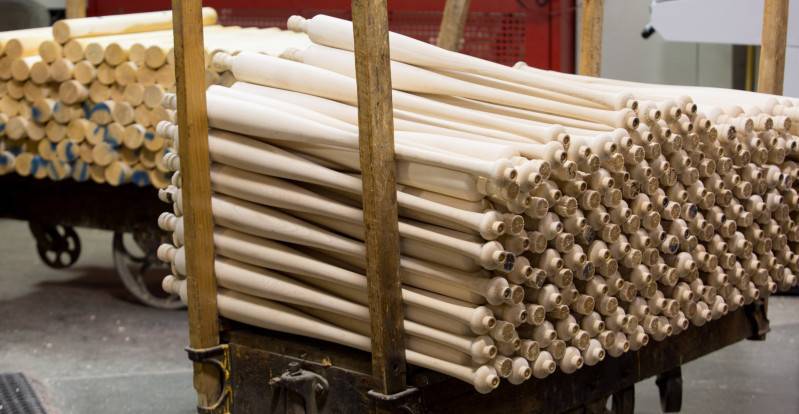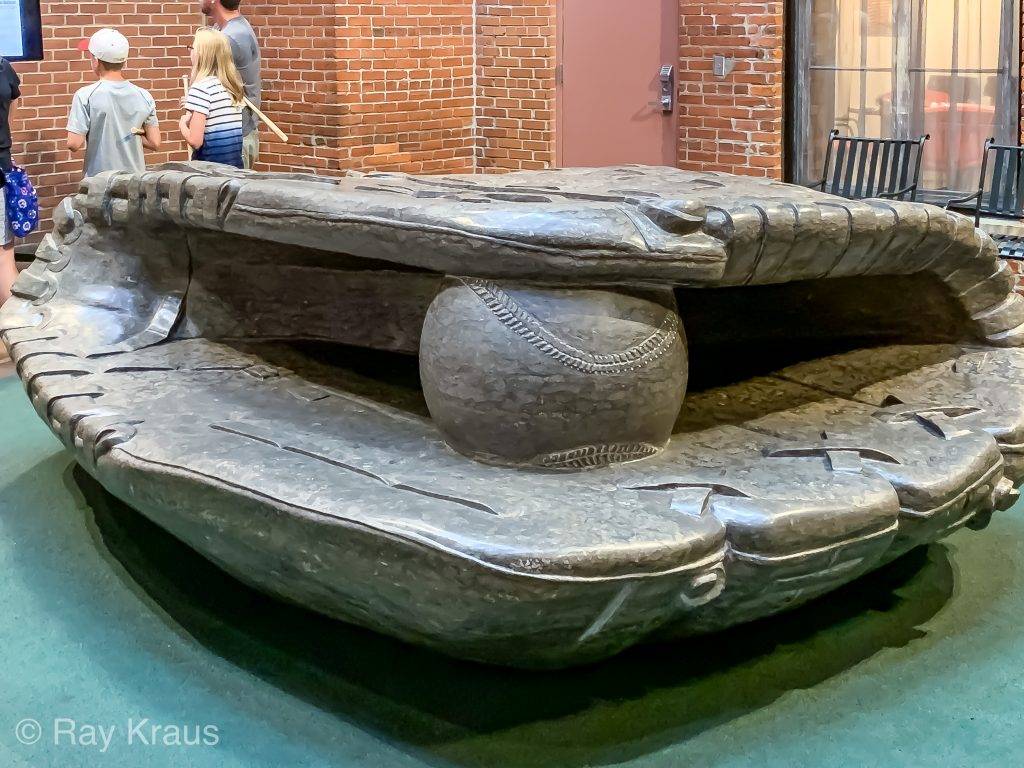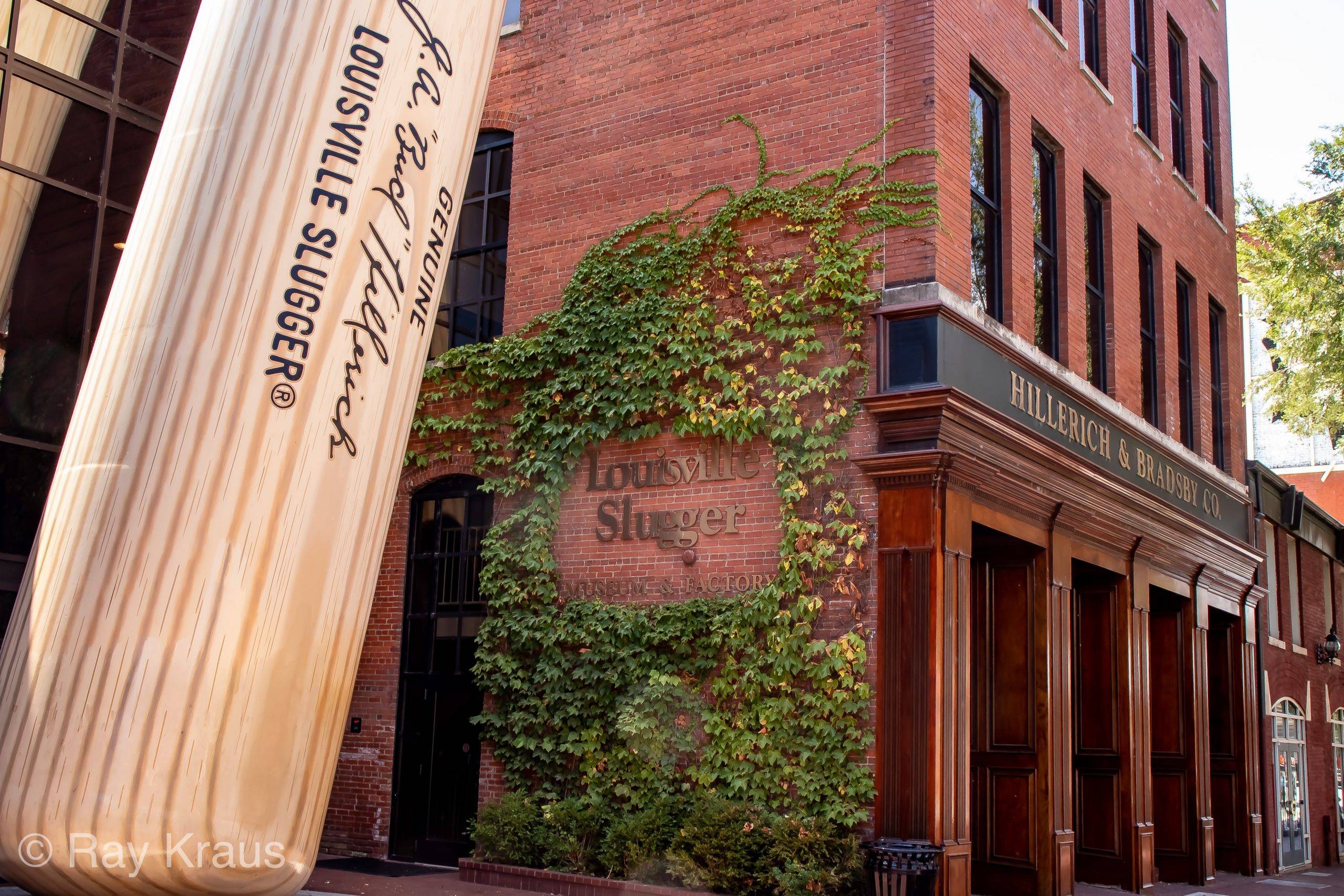“The pitcher has got only a ball. I’ve got a bat. So the percentage in weapons is in my favor, and I let the fellow with the ball do the fretting.”
Hank Aaron 1
Fans focus on a pitcher’s pitch. The question is which of his pitches is the best. Is it his fastball? His curve? Maybe his splitter? Or his slider? Regardless of the pitch, the ball is always the same. Notwithstanding the issues about possibly “juiced” balls, each pitcher uses the sport’s current version of the ball.
The ball itself is not terribly interesting unless it’s the one used when something unusual happens. An ordinary ball becomes distinctive if it was used in a no-hitter or a record-breaking hit or home run. Besides that, one pitcher’s baseball is not different from another’s ball. Baseballs aren’t exciting.

Hitters’ bats are different. Each player’s bat is unique. Their bats are like medieval knights’ swords. Each one is different and has a special relationship with its owner. Similarly, the bat is what hitters take into battle, and fans revere them. Many fans who cherish the game and its traditions, want to see and hold their favorite players’ bats.
I was in the middle of a drive through Ohio, and Pennsylvania. My goal was to see the Indians, Reds, and Pirates. Since Louisville – home of the Louisville Slugger Museum and Factory – is only 100 miles from Cincinnati, I had to include it in my itinerary. After all, the Louisville slugger was synonymous with the “official” Major League’s bat for most of its history.
The Louisville Slugger a Brief History
“Baseball just came as simple as the ball and bat. Yet, as complex as the American spirit symbolizes. A sport, a business and sometimes almost even a religion.”
Ernie Harwell 2
The legend tells us that 17-year-old John Andrew “Bud” Hillerich was watching the major league Louisville Eclipse in 1884. At that game, the team’s superstar, Pete Browning, whose nickname was “The Louisville Slugger,” broke his bat. Bud, who was an apprentice at his father’s woodworking shop, “J. Heinrich, Job Turning,” offered to craft a replacement. When Browning got three hits with his new bat, Heillerach’s baseball bat business was born. 3

However, Bud’s father, J. Fred Hillerach, was not interested in the baseball bat business. He didn’t like baseball and didn’t think bats would be a valuable addition to his burgeoning business. Instead, J. Fred felt that the future of the company was in his “very popular, swinging butter churn.”
Undeterred, Bud continued to build their bat-making business and even invented some patented manufacturing processes. As the bat business grew, the company trademarked the name “Louisville Slugger” in 1894.
In 1897, Bud became a partner in the business, which became J.F. Hillerach & Son.
As their business grew, they started garnering endorsements. The first was from the Pittsburgh Pirates’ superstar shortstop, Honus Wagner, in 1905. In so doing, Wagner became the first professional athlete to endorse an athletic product. Additionally, his autograph was the first to be used on a bat.
In 1911, Frank Bradsby, a successful salesman, joined the company. Bradsby’s sales and marketing skills, combined with Hillerich’s manufacturing capabilities, pushed their success even higher. In 1916, the Hillerich & Bradsby Co. was born when Bradsbury became a partner.
Friday – August 16 – Louisville
”I never blame myself when I’m not hitting. I just blame the bat, and if it keeps up, I change bats.”
Yogi Berra 4
On Friday morning, I drove the few blocks to Cincinnati’s Great American Ball Park to take pictures in the daylight. Unfortunately, the ones I took the previous night were too dark. After I captured the photos I was hoping for, I drove about two hours to Louisville to visit the Louisville Slugger Museum and Factory.

The museum and factory are in a red brick building on West Main Street. Leaning against the two-story building is a very tall replica of a Louisville Slugger bat. I’d seen the bat from the highway when I drove by years ago and always wanted to visit.
There are four parts of the location to visit. Once I had my tickets, I spent a little time in the store where I ordered a personalized bat. Then I went to the museum to meet my group for the factory tour. After the tour, I went to the Bat Vault, which was the highlight of my day. Finally, I went back to the store to pick up my bat, buy a t-shirt, cap, and a few gifts.
Museum and Store
“They give you a round bat, and they throw you a round ball, and they tell you to hit it square.”
Willie Stargell 5

I started my visit in the store to order a personalized Louisville Slugger bat. It wasn’t something I had planned to do; frankly, I hadn’t realized I could do so. But when I saw people leaving the museum with bats, I couldn’t resist memorializing my journey with a “Baseball Nomad” inscribed Louisville Slugger. I’m so glad I did as it’s one of my treasured souvenirs from my eight-month adventure. I like the small souvenir bat that they give you after the tour, but the real, engraved bat is great!
The museum is a large room with displays that describe the company’s history. It has artifacts, pictures, and bats from famous players and the company. While the items are interesting, they’re reminiscent of things I saw at the Hall of Fame and other museums. The real fun was in the Factory and the Vault.
The Factory
“I don’t like to sound egotistical, but every time I stepped up to the plate with a bat in my hands, I couldn’t help but feel sorry for the pitcher.”
Rogers Hornsby 6
My experience became much more enjoyable when a guide led us into the factory for the tour.
First, we watched a film about how they select white ash trees from forests in Western New York and Pennsylvania. These trees were traditionally the most popular bat material. However, maple bats now dominate due to the devastation of white ash forests caused by the Emerald Ash Borer beetle. For the record, the Emerald Ash Borer, is an exotic beetle whose larvae feed on the inner bark of ash trees, disrupting the tree’s ability to transport water and nutrients. The beetle is destroying Ash trees, especially in the northeast part of the country. 7

The guide led us through the factory where we saw every stage of the bat creation process. It started at a display of three inch diameter, cylindrical pieces of wood called “billets.” After the billets are aged in kilns for six to eight weeks they are sent to the factory. 8
At the factory, lathes are used to form bats according to specific dimensions using a template. Initially, workers used lathes to carve the bats, but the process is computerized now. After lathering, the bats are hardened with heat treatments, and finished with lacquer and/or paint. Finally, labels are burnt into the bats or decals applied. The bats are ready for action. On average, Hillerich & Bradsby makes 3,000 bats per day. 9
The Bat Vault
“Are you tall? Are you strong? How big are your hands? You must be honest with yourself, or you will end up using the wrong bat.”
Pete Rose 10
Now it was time for the most fascinating and memorable experience of my entire summer journey. My premium ticket permitted me to visit the Bat Vault. [9] The Vault contains the models used as templates during the lathing process. The Vault is small, and there is only room for small groups. I was with another couple and a guide who was responsible for selecting exciting models for us to see. Of course, the most interesting were the models of bats used by some of baseball’s greatest hitters.

After we put gloves on, our guide gave us famous bat models to hold and examine as he told us stories about the players that used them.
He explained that the models were necessary to tailor bats to each player’s specifications. Through a series of iterations, they create a model of the player’s ideal bat. Then they use the model to form the bats used in games. In the old days, when they manually lathed the bats, workers used calipers to measure the bats at critical points. Workers drew six to eight lines a few inches apart on the model to identify the bat’s measurement points. Of course, today, the process is more precise since they use computers that make more accurate measurements.
Ted Williams’ Bat
“God gets you to the plate, but once you’re there, you’re on your own.”
Ted Williams 11
Ted Williams, of course, is legendary for his scientific approach to hitting. The science was part of his bat creation process.

Instead of measurement points a few inches apart, Ted’s bat model has markings at every inch. In effect, there are thirty or so rings drawn on his bat. It’s quite different from the other bats we held. Williams expected the bat to meet his specified measurements at each of these points on the bat.
Our guide recounted that once when Williams examined a new order, he felt that one bat was a little off. They measured the bat once they received it at the factory. Surprisingly, they found a variance of less than a sixteenth of an inch at one point on the bat. The difference was amazingly small, only the thickness of a sheet of paper, but Williams noticed it.
Mickey Mantle’s Bat
“Somebody once asked me if I ever went up to the plate, trying to hit a home run. I said, ‘Sure, every time.'”
Mickey Mantle 12
If Williams was likely the game’s best left-handed hitter ever, Mickey Mantle was possibly the best switch hitter. However, their approach to hitting and their bats were very different. Where Williams was the scientist with a very analytical approach, Mantle was more primitive. Mantle did not think that much, he just found a pitch and hit it. In contrast, Williams thought about every phase of his swing,
”One time before a game, Williams confused Mantle with a series of questions of his own. When Ted asked him which hand was his power hand and which was his guide hand, Mickey had no idea what he was talking about. After listening to him, Mantle tried applying his theories at the plate, but imitating Ted only made batting more difficult. He didn’t get a hit for about twenty-five straight plate appearances.”
…“Hell,” Mantle said years later, “I just used to go up there swinging.”
Randy Roberts and Johnny Smith 13

Their process of selecting bats followed this pattern. Where Williams was extremely precise about his bats, Mantle was not. When Mantle started his career, he tried a model created for Chuck Klein (model number K55)14, and he liked it. It was the only H&B model he ever used as he batted .298 and hit 536 home runs in his career. 15
Jackie Robinson’s Bat
“Above anything else, I hate to lose.”
Jackie Robinson 16

I revere Jackie Robinson. I don’t just admire his desire, determination, and skill that revolutionized the sport and opened the door for so many. Moreover, I also admire his courage to change the game and fight for Civil Rights in all walks of life.
So imagine my excitement when he pulled out Jackie’s #R-17 17 bat and gave it to me. The bat was surprisingly heavy with a thicker handle than most. It was an honor to have the chance to hold the bat model that he likely held.
Roberto Clemente’s Bat
“I dedicated the hit (his 3,000th) to the Pittsburgh fans and to the people in Puerto Rico and to one man (Roberto Marin) in particular. The one man who carried me around for weeks looking for a scout to sign me.”
Roberto Clemente 18
During the hour we spent in the Bat Vault, we heard many stories and held many bats. One of the last was unforgettable.

Roberto Clemente was one of my favorites. Fortunately, I saw him on television a lot when I was growing up, since the Pirates and the Mets were in the same division. I likely saw him play in person at Shea Stadium, but don’t have any memories of that. He was a graceful, beautiful ballplayer.
I’ll also remember his last hit. The Mets were in Pittsburgh at the end of the 1972 season. I was watching on television when Clemente hit a double in a near-empty Three Rivers Stadium off John Matlack. Standing at second, he raised his helmet to acknowledge the crowd’s applause and flicked his neck like a proud thoroughbred. It was his last hit in his storied career. At the time, he was just the eleventh man to reach 3,000. 19
In the Vault, the guide explained that they were working on a new bat for Clemente and had a model ready for him to examine in December 1972. However, he never did so, since he died a few weeks later in his infamous plane crash on New Year’s Eve. I was near tears as I held the bat.
Driving to Columbus
“When you play this game for twenty years, go to bat ten-thousand times, and get three-thousand hits, do you know what that means? You’ve gone zero for seven-thousand.”
Pete Rose 20
I left Louisville in the early afternoon for the three and a half-hour drive to Columbus. I was retracing the route to Cincinnati that I took that morning. Moreover, I was retracing the course to Columbus that I took the day before. In my mind, I was replacing my life’s route that took me through two careers and into Louisville’s Bat Vault.
It was just another beautiful summer day on the road. I had now been on my journey for five months and traveled thirty-five thousand miles. Over time, a new consciousness was forming. By this time, I had few regrets about not working. I didn’t harbor resentments for the way my career ended. I was just happy to be where I was and ready to head to Pittsburgh tomorrow.

- www.brainyquote.com
- Ibid.
- All information for this section from “Slugger Museum – About Us – Our Story”
- www.brainyquote.com
- Ibid.
- Ibid.
- See “Emerald Ash Borer Information Network” website
- Scott Oldham, “Louisville Slugger – The lumber that still powers our national pastime.” Popular Mechanics, September 1999
- sluggermuseum.com – About Us – F.A.Q.s
- www.brainyquote.com
- www.azquotes.com
- www.azquotes.com
- see The Athletic’s adaption of: A Season in the Sun: The Rise of Mickey Mantle by Randy Roberts and Johnny Smith.
- Mind & Market: Lousiville Slugger Model Numbers, April 3, 2016
- Baseball Reference – Mickey Mantle
- Baseball Almanac: Quotes
- Mind & Market: Lousiville Slugger Model Numbers, April 3, 2016
- Baseball Almanac: Quotes
- Tyler Kepner, “Clemente’s 3,000th Hit Was Muted Milestone in Ambivalent City,” New York Times, July 11, 2011
- www.brainyquote.com


